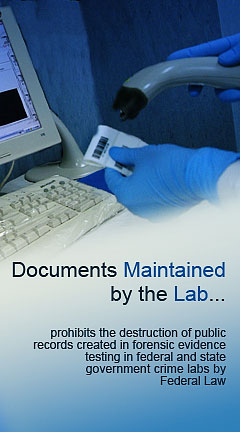Archival Notice
This is an archive page that is no longer being updated. It may contain outdated information and links may no longer function as originally intended.
Home | Glossary | Resources | Help | Course Map
Whenever possible, a portion of biological, toxicological or other samples should be retained for future testing. In situations where the entire sample may be consumed in the testing process, the analyst should notify and/or consult, as prescribed by their policy, and document the events in the case file.
Evidence items should be maintained at the lab while testing is ongoing. Labs should keep documentation of all personnel with access to the evidence while it is at the lab on a chain of custody form initiated by the submitting agency, maintained by the lab, and transferred to the agency that takes final possession of the evidence.
For more on chain of custody issues, see Sources of Scientific Evidence, Topic 2; Testing or Evaluating Evidence and Writing Reports .
Additional Online Courses
- What Every First Responding Officer Should Know About DNA Evidence
- Collecting DNA Evidence at Property Crime Scenes
- DNA – A Prosecutor’s Practice Notebook
- Crime Scene and DNA Basics
- Laboratory Safety Programs
- DNA Amplification
- Population Genetics and Statistics
- Non-STR DNA Markers: SNPs, Y-STRs, LCN and mtDNA
- Firearms Examiner Training
- Forensic DNA Education for Law Enforcement Decisionmakers
- What Every Investigator and Evidence Technician Should Know About DNA Evidence
- Principles of Forensic DNA for Officers of the Court
- Law 101: Legal Guide for the Forensic Expert
- Laboratory Orientation and Testing of Body Fluids and Tissues
- DNA Extraction and Quantitation
- STR Data Analysis and Interpretation
- Communication Skills, Report Writing, and Courtroom Testimony
- Español for Law Enforcement
- Amplified DNA Product Separation for Forensic Analysts


